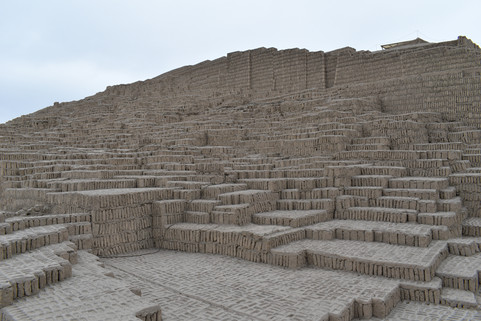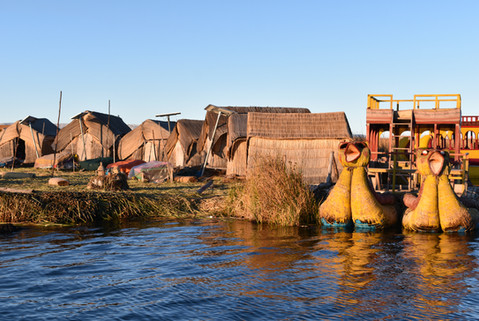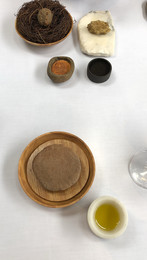Peru – Hop on the Adventure | Follow the Inca Trails Up to Machu Picchu and Walk Over the 'Rainbow'
- Izabel Stalder
- Jun 10, 2020
- 10 min read
Updated: Feb 5, 2022

Peru, a dream or a reality? Those landscapes, floating villages and ancient Incan city – Machu Picchu, the ‘’Rainbow mountain’’ – Vinicunca, the Sacred Valley or Colca Canyon, the incredible Nazca Lines, the Amazon forest, the alpacas and llamas roaming the country, all this is to be found in Peru. You could also ride ski, do sandboarding, dune buggy or simply get lost in the Huaccachina desert oasis (well, at least before). This South American country brought me all possible emotions and introduced me to my current favourite New Wonder of the World – Macchu Picchu.
I’ve been to 3 of the New Seven Wonders and this is by far taking the first place. I felt something in the air, which is hard to describe. The Inca trails, the taste of the past, the view, the location – this place is sacred and jaw-dropping. Save your breath, because it will be taken once you set a foot on those lands.

When is the best time to go to Peru?
We went to Peru at the beginning of September. This is considered winter in Peru (May-September). It is the driest and therefore the best season to travel the country, which is perfect if you are planning to do some trekking to Machu Picchu, Vinicunca etc. The temperatures are perfect for a discovery trip. The Peruvian summer is warm but very wet with frequent, heavy showers and unpleasant for exploration (December – March).
How to travel through the country?
We checked all the possibilities and we chose to take the Peru Hop Bus - Hop-on, Hop-off bus which stops at all the beautiful Peruvian sights. You can choose whenever you want to hop on the bus and where to be dropped. There is an online timetable you have to check prior departure and give your itinerary to the company so that you have your seats guaranteed for the desired day and time. The best part – the bus is picking you up straight from your hotel/hostel.
Only reading the motto of the Hop Bus, it was sold to me: ‘’Don’t be a typical tourist…Discover the real Peru!’’.
This is the most convenient way to get around Peru and not to miss a thing while travelling because ‘’Peru has one of the worst transport systems in the world, unsafe taxis, and not many people speak English’’. We purchased the Full South to Cusco pass, which costs 199$ and is valid for one year. You can always change your hop-ons and pickup locations up to 12 hours before the next bus departure.
This is also the cheapest way to discover the country and at the same time offering comfy semi-bed reclining seats, clean toilet and equipment (blankets, TVs, USB ports etc.). Usually, when travelling I love to rent a car or use different transportation options, but this is so well organized in Peru, that I highly recommend you not to beat your head against the wall and go straight book it. It makes the life so much easier and helps you discover everything and more. There are so many hidden gems, that you will thank me after for choosing this option. Once you are out of the Hop Bus, you are on your own. It is not a group tour with a guide, it’s a transportation+, where if you wish you can meet other fellow travellers or just have your rhythm, which I really appreciate. I don’t like to follow the tempo of a group and love to explore myself, deciding the duration of every adventure alone. However, if you need a guide, you can find one at almost all points of interest. There are also tours offered by the company. You can book them separately.

TRAVEL ITINERARY / MY WAY
DAY 1. LIMA
Arrival to Lima. We spent one full day in Lima by the arrival and another day before leaving the country. We wandered around and covered some of the famous points of interest there as Plaza de Armas De Lima, Larco Museum, Huaca Pucllana, Basilica y Convento de San Francisco de Lime, Government Palace of Peru and Cathedral of Lima. We had a wonderful coastal Broadwalk and tasted some of the Peruvian restaurants in Miraflores neighbourhood.
DAY 2. PARACAS / ISLAS BALLESTAS + HUACACHINA
6 AM: Early Hop Bus pick-up from the hotel. Our journey continues to Paracas. There are 2 options here – you can go to the Secret Slave Tunnels, or to take the express route option straight to Paracas.
LIMA - PARACAS - 260km
10 AM: Arrival in Paracas. From Paracas we took a speedboat to explore the Ballestas Islands or The Poor Man’s Galapagos. The Paracas National Reserve is included in the price of the Hop Bus, but normally the price is $15. The wildlife there is truly incredible and untouched. Those islands are a sanctuary for marine fauna like guanay guano bird, the blue-footed booby and the tendril. We also saw some fur seals, sea lions and penguins. We also couldn’t escape the luck the poo of the guanay guano bird gives. It was ‘’raining luck’’ on our heads... The smell is also delish, but the trip is worth every second. The boat ride lasts around 2 hours. On the way, we also saw the Paracas Candelabra or ‘’Candelabra of the Andes’’. It is an enormous geoglyph, dating back to 200 BCE. The meaning and the creators of the symbol are still unknown.
Mid-day 1 PM: We jumped on the Hop Bus to our next destination – Huacachina, Ica, which is the only desert oasis in South America.
PARACAS – HUACACHINA – 70km

2:15 PM: Arrival to Huacachina. This location consists of endless Sand dunes in a tiny village, in the middle of which you will find the green waters of the Huacachina Lagoon. Dune buggies, sandboarding – there were so many fun activities and magical landscapes. Unfortunately, an accident which lead to the death of somebody happened during a buggy ride. This is why the dune buggies were banned from the police. A lot of accidents happen also with sandboards, so be prepared that you might just walk the dunes and enjoy the scenery. Don’t forget your sunscreen, hat and water. Missing the sunset here is an officially recognized sin. Just kidding!
TIP: As the desert oasis is located in this small village, there are not so many accommodation options, so make sure to book in advance if you want to overnight there. Another option to book a hotel/hostel is in Ica.

DAY 3. HUACACHINA + NAZCA LINES
We had half a day more to enjoy Huachachina and the beautiful desert oasis.
1 PM: Departure to Nazca Lines. HUACACHINA – NAZCA LINES – 134km
1:15 PM: On the way, we stopped for a PISCO tasting and vineyard tour. Pisco is a brandy produced in winemaking regions in Peru and Chile. It is made by distilling fermented grape juice. Must-try when in Peru.

4:30 PM: Nazca Lines – climbing to the Viewing tower of Nazca is included in the Hop Peru bus, otherwise, it costs $5. However, a flight over the Nazca Lines is possible. The flight price is $80 with a duration of 30 minutes. Prepare also to pay a small additional airport tax.
If you’ve never heard of the Nazca Lines – they are geoglyphs in the Nazca desert, some of which older than 2’000 years. They are spread in over 80km of territory in the desert. There are still a lot of arguments and uncertainties about how they are created. You can find different theories and understanding of the shapes of the Nazca lines. It is believed that some of the lines are constellations in the sky – astronomical maps, or that they are playing a role in pilgrimage – helping to get to sacred routes between Nazca religious sites.
We decided not to overnight in Nazca, so after dinner, we continued to Arequipa which is a whole night journey. We slept on the bus and before to realize, we were already there.

DAY 4. AREQUIPA
NAZCA – AREQUIPA 575km
5:30 AM: Arrival to Arequipa. After the night trip and sleeping in the bus, I thought we might be KO, but surprisingly we were quite in good shape, ready to explore further.
This day we roamed the streets of Arequipa – a nice baroque style city with white architecture, constructed from white volcanic stones. The city is located between 3 volcanoes.
Here are some sights we’ve visited: Basilica Cathedral of Arequipa, Santa Catalina Monastery, Plaza de Armas, Mirador de Yanahuara (viewpoint), Founder’s Mansion.
You can also go for a hike to Chachani volcano, which is 22km from the city, 6’057 metres above sea level.

DAY 5. COLCA CANYON + AREQUIPA
AREQUIPA – COLCA CANYON 160km
8 AM: Departure to Colca Canyon. Colca Canyon is one of the deepest canyons in the world with its 3400m depth, which makes it as twice as deep as the Grand Canyon. Colca Canyon is home of the famous giant Andean condor. We were able to witness the flight of those massive vultures, which was truly impressive. They are getting up to 130cm in length and 15kg in mass, with a wingspan ranging from 270 - 320cm. You can do a hike, or just go to see it and leave in 1-2 hours, because it is worth it.
The afternoon we spent in Arequipa and greeted the sunset with a volcano view from a rooftop bar, close to the Basilica.
Overnight in Arequipa.
DAY 6. / DAY 7. PUNO (TITICACA LAKE)
5:45 AM: Arequipa departure.
AREQUIPA – PUNO 293km
On the way to Puno, we stopped to the Laguna Lagunillas Viewpoint, which is astonishing.

1 PM: Arrival to Puno. We walked around the city and after we took a boat to explore the highest navigable lake in the world - Titicaca Lake, which is home to rare aquatic wildlife. The Titicaca Lake is straddling the border between Peru and Bolivia and it is believed to be the birthplace of the Incas. It has numerous floating villages - 70 man-made totora reed islands where the people are living a simple life, claiming that they have ‘’black blood’’, because of their good immune to the cold. They are hunting and fishing the land and water they occupy. Once there, the kind pre-date Incan descendants – the Uros people will show you and explain to you everything about their culture, beliefs, how and why they created those floating villages. It’s really interesting, but you have to see it in person. Of course, afterwards, they will try to sell you some souvenirs or offer you a traditional reed boat ride to one of the other floating islands they occupy. We couldn’t say no to the cute kids selling the souvenirs, but I also think that it is the least we could do when we are attending their lands. The visit duration is 3-4 hours.
TIP: You can get a passport stamp that you’ve been to Titicaca lake. It is for a small fee and I think you should not skip adding this stamp to your collection.
DAY 8. CUSCO
10 AM: Puno departure.
PUNO – CUSCO 386km
6:30 PM: Arrival to Cusco. We went for dinner and walk in the city.
DAY 9. MACHU PICCHU
Please note: The Peru Hop Bus goes to Cusco, but from Cusco, you have to book separately the very famous train ride which passes through the Sacred Valley of the Incas and opens the curtains of breathtaking sceneries. It stops at Aguas Caliente (Machu Picchu Pueblo), from where you have to hike up to Machu Picchu or take another bus.
Another even more exciting way to visit Machu Picchu is to do the Inca trail which leads you to discover more of the Inca paths and to feel closer the spirit of this ancient civilization by following their steps.
You have to buy and secure your visit to Machu Picchu in advance. We booked our tickets 2 months prior to arrival. Also, keep in mind that there is a schedule to visit this amazing sight. The entry starts from 6 AM and the ticket prices are between $70 and $85, depending on if you want to visit only Machu Picchu, Machu Picchu + Wayna Picchu, or Machu Picchu + Machu Mountain.
TIP: By the way, you can also get a Machu Picchu stamp in your passport. They are doing the stamping at the entrance.

DAY 10. CUSCO
Cusco is a starting point for Machu Picchu, Vinicunca (Rainbow Mountain) and the Sacred Valley. It is a former centre of the Inca Empire and it is located high in the Andes. Cusco is truly charming and one of my favourite towns in Peru. I could’ve roamed its streets for ages.
What not to miss, while in Cusco, except the places mentioned above: Plaza de Armas, Cusco Cathedral, Saqsaywaman, Qorikancha, Q’enco Archaeological Complex.
Also, the food in Cusco is delicious. There are a lot of vegan, healthy options, and of course, the famous ceviche is everywhere in Peru, also the guinea pig, which I know it’s cultural, but it made me cry to see this in real life…

DAY 11. VINICUNCA (RAINBOW MOUNTAIN)

To go to Vinicunca, we booked a separated bus tour starting at 5 AM. Vinicunca is 3 hours away from Cusco and what everyone recommends is to spend 2-3 days in Cusco, so that you can acclimate yourself to the area elevation. The altitudes are high and in Vinicunca with its 5,200 metres above sea level, you can experience difficulty in breathing, an altitude sickness. We took the easier way and had just about an hour hike, which didn’t look difficult, but it was challenging, because of the lack of oxygen. You can also do the whole trek from the beginning, but I guess for this you have to be prepared and an experienced hiker. The road by bus is very steep and the curves very sharp. Once you are up there, you are on your own and have time to get to the Rainbow mountain and the Red Valley. There were also horses bringing the tourists up for a fee, but I ask you not to do that. It breaks my heart to see how those animals are misused.

DAY 12. THE SACRED VALLEY
We paid for a private tour/driver to drive and show us around the Sacred Valley regions, which is stretching roughly 60 kilometres. The views and the Inca ruins we saw this day were incredible. We even witnessed a town festival, which was so lively, colourful and fun. The Sacred Valley is truly impressive and makes you feel in another world. Those are only some of the sights we went to and I think you should not skip any of them - Tambomachay, Puka Pukara, Moray, Juchuy Coscco, Tipon Archaeological Site, Salinas de Maras, the Spanish colonial villages – Pisac and Ollantaytambo.

DAY 13. / DAY 14. LIMA
Flight from Cusco to Lima. After we arrived, we continued exploring Lima and went to one of the World’s best restaurants – Central. The Central restaurant offers a 16-course elevation meal with wine pairing. Thanks to the focus of the restaurant – ecosystems and elevations, you are ‘diving’ to try the Peruvian underwater specialities from -10 metres, going through the Amazon and to the mountains up to 4050 meters above the sea level. Each altitude has its specialities growing or living there. Such an interesting concept – very pricey, but worth it if you can afford it. I chose to have a vegan elevation menu and loved it more than everything. Truly one of the best dining experiences I’ve ever had. Note, that you also have to book the restaurant online, much in advance if you want to secure your table. The Central was the perfect end of our close meetup with Peru.
Peru is one of those countries, which leaves you speechless, holding so many emotions and memories. One of the most impressive civilizations – the Incas and one of the most beautiful Wonders of the World is located there, and even if you go just for Machu Picchu, you have to set a foot on this land at least once in your life. Discover the wonder and wander around, because there is a lot to discover. I’ve never thought that Peru has so many hidden gems and magical spots. Whenever you can, book your ticket, teleport back in time and live the Peruvian magic yourself.


















































Kommentarer